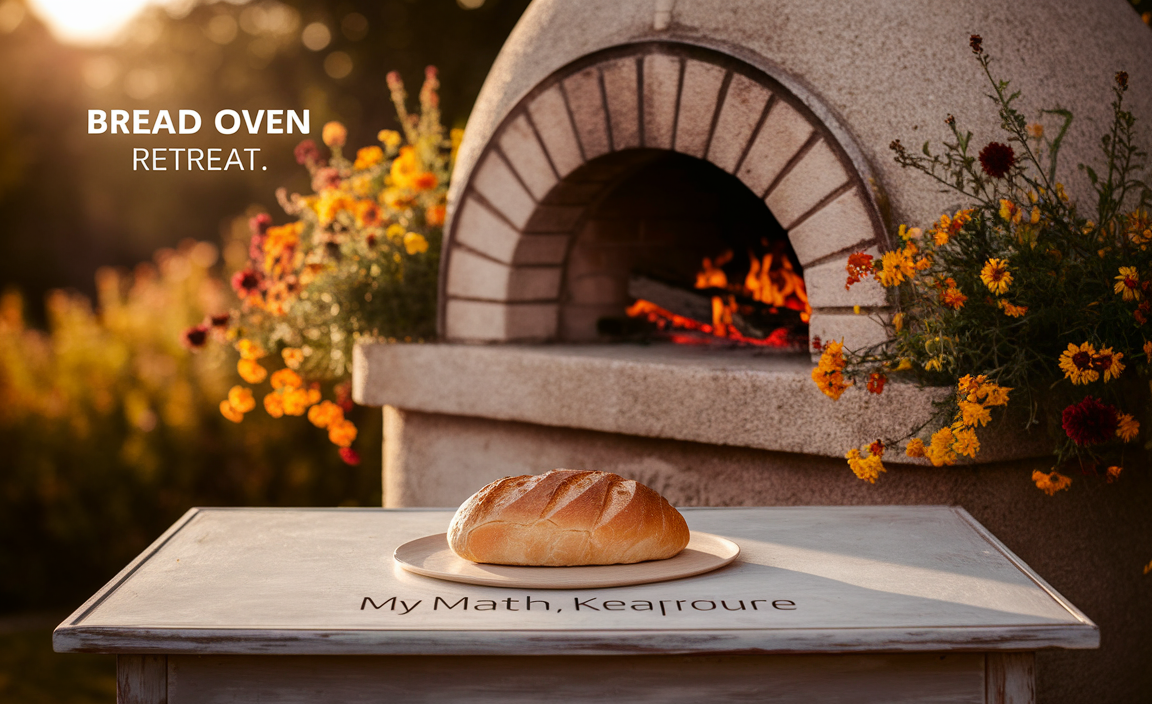Unlock creamy, flavorful Veneto Risotto with these essential tips! Achieve perfect texture and taste every time by mastering rice selection, broth management, and the crucial ‘mantecatura’ step. This guide provides clear, actionable advice for beginner cooks to create a truly authentic Italian dish.
Hey there, fellow food adventurers! Joseph Bryant here from FoodsGuider. Have you ever dreamed of swirling a fork into a plate of perfectly creamy risotto, just like they serve in the sun-drenched Veneto region of Italy? It sounds fancy, right? Maybe you’ve tried it at home, and while it tasted good, it didn’t quite have that signature velvety texture. Don’t worry, you’re not alone! Risotto can seem a little intimidating, but it’s really just a patiently crafted dish. Today, we’re going to demystify the magic behind Veneto risotto. We’ll break down the simple secrets and essential tips that turn humble rice into a culinary masterpiece. Get ready to impress yourself and your loved ones with a show-stopping risotto that’s surprisingly easy to make.
Why Veneto Risotto is a Culinary Gem
The Veneto region, nestled in the northeastern corner of Italy, is a land of rich culinary traditions. It’s famous for its stunning landscapes, from the winding canals of Venice to the rolling hills of Prosecco country. When it comes to food, Veneto is a treasure trove, and risotto holds a special place. Unlike its lighter cousins, Venetian risotto is often characterized by its incredibly creamy, almost flowing texture and a deep, comforting flavor profile infused with local ingredients. Think earthy mushrooms, sweet peas, succulent seafood, or the vibrant punch of radicchio. It’s more than just a rice dish; it’s a testament to the Italian philosophy of taking simple, quality ingredients and transforming them with care and technique.
The beauty of Veneto risotto lies in its adaptability. While classic recipes exist, the spirit of the region encourages creativity. The foundation, however, remains the same: a patient approach and a few key principles that ensure success. This isn’t about speed; it’s about coaxing the starch out of the rice grains to create that luxurious mouthfeel that makes risotto so beloved. Ready to dive into the art of Veneto risotto?
The Heart of Veneto Risotto: Choosing the Right Rice
The secret to a perfect risotto absolutely starts with the rice. This might be the most crucial tip in our Veneto Risotto Masterclass, so let’s give it the attention it deserves! Unlike regular long-grain rice, risotto rice is special. It has a high starch content and a short, plump grain. When cooked with constant stirring and gradual addition of liquid, this starch is released, creating the naturally creamy texture that defines risotto. Using the wrong type of rice is like trying to build a house with sand – it just won’t hold its shape or texture.
For authentic Veneto risotto, you’ll want to look for specific varieties known for their excellent starch release and ability to absorb flavor. Here are the champions:
- Arborio: This is the most widely available and popular choice for home cooks. It has a large grain and a good starch content, making it forgiving and great for beginners. It yields a creamy risotto, though sometimes slightly less al dente than other varieties.
- Carnaroli: Often called the “king of risotto rice,” Carnaroli grains are longer and more oval than Arborio. They hold their shape better during cooking and release their starch gradually, resulting in a supremely creamy yet firm-to-the-bite risotto. It’s a bit trickier to find and can be more expensive, but it’s worth it for exceptional results.
- Vialone Nano: This is a smaller, more rounded grain, particularly popular in the Veneto region itself. It absorbs liquid beautifully and cooks relatively quickly, offering a wonderful creamy texture and excellent flavor absorption. It’s a beloved choice for traditional Venetian risottos.
When you’re shopping, look for these names. They are usually found in the specialty grain aisle or an Italian foods section. The packaging will often explicitly state “for risotto.”
Pro Tip: Always buy your risotto rice in un-milled or partially milled form if possible. This means the bran layer is still present, which adds nutty flavor and nutrients. However, for most home cooks, high-quality milled Arborio, Carnaroli, or Vialone Nano will yield fantastic results. Avoid long-grain white rice, basmati, jasmine, or brown rice, as they simply won’t produce the desired creamy texture.
The All-Important Broth: Flavor, Temperature, and Gradual Addition
The broth is the lifeblood of your risotto. It’s not just a cooking medium; it’s a primary flavor carrier. For Veneto risotto, using a high-quality, flavorful broth is non-negotiable. Think of it as infusing every single gain of rice with deliciousness from the inside out.
Quality Matters: Homemade vs. Store-Bought
Ideally, a homemade broth will give you the best flavor. Chicken, vegetable, or even a light beef broth can be used depending on the type of risotto you’re making. A simple homemade chicken broth, for instance, can be made by simmering chicken bones, aromatics like onion, carrot, celery, and herbs like parsley and bay leaves. For a vegetarian risotto, a rich vegetable broth made with mirepoix (onion, carrot, celery), leeks, herbs, and perhaps some dried mushrooms will be fantastic.
If you’re short on time, don’t despair! Opt for the best quality store-bought broth you can find. Look for options that are low in sodium so you can control the saltiness yourself, and ideally, those made with natural ingredients without excessive additives. Avoid bouillon cubes if possible, as they can sometimes lend an artificial flavor.
The Temperature Secret: Hot Broth is Key
This is a critical step that many beginner cooks overlook. Your broth must be kept simmering hot throughout the cooking process. Why? Adding cold broth to hot rice shocks the grains, slowing down the cooking process and negatively impacting the release of starch. When you add hot broth gradually to the rice, it helps maintain a consistent cooking temperature, allowing the grains to swell evenly and release their starch properly, creating that signature creaminess and preventing a mushy texture.
How to manage: Keep a separate saucepan with your broth on the stovetop set to a low simmer. Ladle the hot broth into the risotto as needed, ensuring it’s always steaming.
Gradual Addition: Patience is a Virtue
Risotto is not a “dump and stir” recipe. The gradual addition of broth is what allows the rice to cook evenly and release its starch. You’ll typically start with a ladleful of hot broth, stir until it’s mostly absorbed, and then add another. This process occurs repeatedly for about 18-20 minutes, depending on the rice and heat.
The process looks like this:
- Add one ladle of hot broth to the sautéed rice and aromatics.
- Stir gently and continuously until the broth is almost completely absorbed by the rice. You’ll notice the consistency becoming creamier.
- Repeat this step, adding broth one ladle at a time, stirring, and allowing absorption between each addition
This patient process is what transforms separate grains of rice into a cohesive, creamy dish.
The Soffritto: Building the Flavor Base
Before the rice even hits the pan, the foundation of flavor is built with the “soffritto.” This is a traditional Italian cooking technique where finely chopped aromatic vegetables are gently sautéed in fat (usually olive oil or butter) until softened and translucent. This process not only softens the vegetables but also releases their natural sugars, creating a sweet, complex flavor base that permeates the entire dish.
For a classic Veneto risotto, the soffritto typically includes:
- Onion: Finely minced yellow or white onion is the most common.
- Garlic (Optional): Some recipes include a little minced garlic for an extra punch, but it’s not always traditional in all regions, so this can be adjusted to your preference.
- Celery (Sometimes): A finely diced stalk of celery can add another layer of subtle savory flavor.
- Carrot (Less Common): While common in other Italian dishes, finely diced carrot is less frequently seen in a traditional risotto soffritto, as its sweetness can sometimes overpower delicate flavors.
The key is to mince these vegetables very finely so they soften evenly and melt into the risotto as it cooks. You want to sauté them gently over medium-low heat in olive oil or butter until they are soft and translucent, not browned. This usually takes about 5-7 minutes. Rushing this step means you won’t develop the depth of flavor needed for an outstanding risotto.
Toasting the Rice: The Crucial First Step
Once your soffritto is ready, it’s time to add the rice itself. This is where another vital technique comes into play: toasting the rice, also known as “tostatura.” This step is absolutely essential for achieving the perfect risotto texture and flavor.
The rice grains are added directly to the pan with the softened soffritto and cooked for a minute or two, stirring constantly. What happens during toasting?
- Seals the Grains: The heat gently toasts the outer layer of the rice grains, creating a slight barrier. This barrier helps the grains maintain their shape and integrity as they cook, preventing them from becoming mushy.
- Enhances Flavor: Toasting gives the rice a slightly nutty aroma and a more robust flavor.
- Facilitates Starch Release: While it creates a barrier, the toasting process also prepares the rice to release its starch more effectively when the hot broth is added.
You’ll know the rice is toasted when the edges of the grains become translucent, and you might notice a slightly nutty aroma. Don’t let them brown; just a gentle toasting is all you need. This usually takes about 2-3 minutes over medium heat.
Deglazing: Adding Depth with Wine
After toasting the rice, the next step in building layers of flavor for your Veneto risotto is deglazing with wine. This is a classic technique that adds complexity and a subtle acidity that brightens the dish.
You’ll pour a splash of dry white wine (like a Pinot Grigio or Soave, both popular in Veneto) into the hot pan with the toasted rice. As the wine hits the hot pan, it will sizzle. Stir continuously, scraping up any little browned bits (fond) from the bottom of the pan. Let the wine bubble and evaporate almost completely until you can no longer smell the alcohol. This process infuses the rice and the pan with the wine’s flavor and helps carry those delicious fond bits into the risotto.
Choose a dry white wine that you would enjoy drinking. Avoid sweet wines, as they can make your risotto cloying. If you prefer not to use alcohol, you can omit this step or deglaze with a little extra hot broth.
The Cooking Process: Stirring and Gradual Broth Addition
Now we arrive at the longest, most meditative part of making risotto. Once the wine has evaporated, you’ll start adding your hot, simmering broth, one ladleful at a time. This is followed by a crucial element: stirring.
The Power of Stirring
Constant, gentle stirring is the key to developing the creamy texture of risotto. As you stir, you are encouraging the rice grains to rub against each other. This friction releases their starches into the cooking liquid, creating a naturally thick and creamy sauce. You don’t need to stir vigorously; a steady, gentle motion is sufficient. It’s also a great time to clear your head or chat with whoever you’re cooking for!
While you don’t need to stir every single second, it’s important to stir frequently. This ensures that the starch is released evenly and that the rice doesn’t stick to the bottom of the pan. If you’re making a risotto with delicate ingredients, like asparagus or seafood, you’ll want to be gentler in your stirring to avoid breaking them down too much.
Timing is Everything: Al Dente Perfection
The cooking time for risotto typically ranges from 18 to 25 minutes after you start adding broth, depending on the type of rice and the heat of your stove. The goal is to cook the rice until it’s ‘al dente’—meaning it has a slight bite to it. It should be tender but not mushy, with a creamy exterior and a firm, slightly chewy center. Taste a grain of rice periodically to check for doneness.
You might not need all the broth you prepared, or you might need a little more. The consistency you’re aiming for is creamy and fluid, not stiff or dry. It should flow gently on the plate, like molten lava.
The Grand Finale: Mantecatura
This is arguably the most satisfying step in creating authentic Veneto risotto – the ‘mantecatura.’ This Italian term refers to the final creaming of the risotto, usually just before serving, which gives it its exquisite velvety finish and rich flavor.
Once the rice is perfectly al dente and the risotto has a lovely, flowing consistency, you remove the pan from the heat. This is crucial; you don’t want to melt the ingredients into oblivion.
Traditionally, mantecatura involves vigorously stirring in cold butter and freshly grated Parmigiano-Reggiano cheese. The cold butter emulsifies with the hot risotto and starch, while the cheese adds saltiness, umami, and further creaminess. Some chefs even add a final swirl of olive oil for extra gloss.
Here’s how to do it:
- Remove the risotto from the heat.
- Add cold, cubed butter (unsalted is best so you can control the salt).
- Add a generous amount of freshly grated Parmigiano-Reggiano cheese.
- Stir vigorously and continuously for about 1-2 minutes. You’ll see the risotto transform into an even creamier, glossier, and more cohesive dish.
This step is what elevates a good risotto to a spectacular risotto. It’s the final flourish that brings all the flavors and textures together in perfect harmony.
Common Risotto Pitfalls and How to Avoid Them
Even with the best intentions, risotto can sometimes go a little awry. Here are some common mistakes and how to dodge them:
| Common Pitfall | Why It Happens | How to Avoid It |
|---|---|---|
| Mushy Risotto | Overcooking the rice; adding too much liquid at once; using the wrong type of rice. | Use Arborio, Carnaroli, or Vialone Nano rice; cook until al dente with a slight bite; add broth gradually; stir frequently. |
| Gummy/Sticky Risotto | Too much stirring (over-releasing starch); not toasting the rice properly; adding cold liquid. | Toast the rice; stir gently but frequently; use simmering hot broth; don’t over-stir once the rice is cooked. |
| Dry/Stiff Risotto | Not enough broth; over-absorption of liquid. | Add broth gradually until a flowing, ripple-like consistency is achieved; mantecatura with butter and cheese helps create flow. |
| Grainy Rice | Under-cooking the rice; not releasing enough starch. | Cook until al dente; ensure consistent heat and gradual broth addition; stir to encourage starch release. |
| Flavorless Risotto | Using weak or bland broth; not building a proper soffritto; not seasoning enough. | Use good quality broth (homemade is best); build a flavorful soffritto; season with salt and pepper throughout cooking and adjust during mantecatura. |
Putting It All Together: A Basic Veneto Risotto Recipe Outline
Here’s a simplified guide to making a classic Venetian-style risotto:
Ingredients (for 2-3 servings):
- 1 tablespoon olive oil
- 1 tablespoon butter (plus more for mantecatura)
- 1/2 small onion, finely minced
- 1 cup Arborio, Carnaroli, or Vialone Nano rice
- 1/2 cup dry white wine (optional)
- ~4 cups hot chicken or vegetable broth
- 1/4 cup grated Parmigiano-Reggiano cheese (plus more for serving)
- Salt and freshly ground black pepper to taste
Equipment You’ll Need:
- A wide, heavy-bottomed saucepan or Dutch oven
- A small saucepan for the broth
- A ladle
- A wooden spoon or heat-resistant spatula
- A sharp knife and cutting board
- A grater for cheese
Step-by-Step Guide:
- Heat the Broth: Pour the broth into a small saucepan and bring it to a gentle simmer over low heat. Keep it simmering throughout the cooking process.
- Make the Soffritto: In your wide, heavy-bottomed







